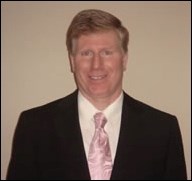Millions of Baby Boomers are approaching – or are already in – retirement. Even if you’ve made plans, have a pension, and have saved up a nest egg through the years, there are still a number of important themes emerging that you’ll have to contend with and that may affect your financial planning in the years ahead.
Studies are showing that spending in retirement in fairly constant. In early retirement most people increase leisure activities such as travel and golf. As they move further along their retirement path, they spend more on medical and health care needs. Such activities as travelling decrease, so total spending doesn’t change all that much on average. As you age, you typically eat less (often less meat), so your food bill also drops over time.
Most people use pensions, RRSPs, non-registered funds, and TFSAs to fund their activities. But the Canada Pension Plan (CPP) forms a large part of most everyone’s retirement plans too, and it is guaranteed, which helps with the financial picture. People who are in the middle income levels can expect about $12,000-$15,000 per year from CCP. For couples, this could mean between $25,000-$30,000 annually, which could pay many ongoing monthly bills and hopefully leave most of your other investments for leisure activities or helping adult children get into expensive housing markets like Toronto, Vancouver, Victoria, or Kelowna.
Count on taxes, clawbacks, and takebacks
If you are planning on your taxes declining in retirement, giving you more discretionary income, don’t count on it. Canadians 65 and over account for over 50% of health care spending but represent only 14% of current population. That number will get larger and larger. Now there are five workers for every retiree. In 15 years it will be two workers for each retiree. Just try to imagine the stress on governments with lower tax revenue from a declining working-age population and ever-growing demands on CPP and health care from the retirement bulge. It is a scary thought for sure.
Politicians only work on four- to-five-year cycles, and certainly don’t plan election platforms on what might happen in 10 or 15 years. They will wait until the mess is upon us. Will they borrow more? Will they cut government pensions? Some of both? Ensure that you have your own funds just to be safe.
Avoid retiring with debt
More retirees than ever before are retiring with uncleared mortgage debt. If you’re in that situation, you may wish to rethink your plan.
First, as I noted above, there are many variables over a 30-year retirement. Costs or income that you had counted on to be stable may not remain so (money-hungry governments always stand ready to claw back, cut back, and take back).
Second, I always tell clients that there are three major outflows of money: home mortgage; food; and vehicles. We will always need to eat and we’ll want to drive until we are physically unable to, because that provides us with much of our independence. But if you can remove one of the big costs, you obviously require less money to fund retirement and or leisure activities. You slogged away at a mortgage for 30 years. Do you want to keep doing so forever? If you must carry a mortgage into retirement, keep it at $150,000 or less to reduce the burden on your income.
Planners used to forecast to age 80 with their clients. That has now moved to age 90-plus. If your financial advisor is still using old numbers, rejig the numbers just in case. It isn’t any fun when you planned for 80 and find yourself at age 75 with very little money left.
Advice for younger Canadians
There is no witchcraft and no shortcuts in this business. People have to live within their means and save over many years, even if you start with $100-$200 a month. Increase it over time as you pay down debt and as your salary increases.
Getting to a comfortable retirement is a marathon, and the sooner you start moving forward, the sooner you will get to the “finish line.” You have to sacrifice some of today’s lifestyle (and save tax by doing so) for a better future. Set up an automatic monthly savings plan, and after a time you won’t even realize the money is coming out. When you see your portfolio statement start to grow, with tax savings coming from contributions to an RRSP, it becomes a win/win scenario.
Courtesy Fundata Canada Inc. © 2016. Bruce Loeppky is a financial advisor with Portfolio Strategies Corp., based in Surrey, B.C., and a regular contributor to the Fund Library. This article is not intended as personalized financial advice.




